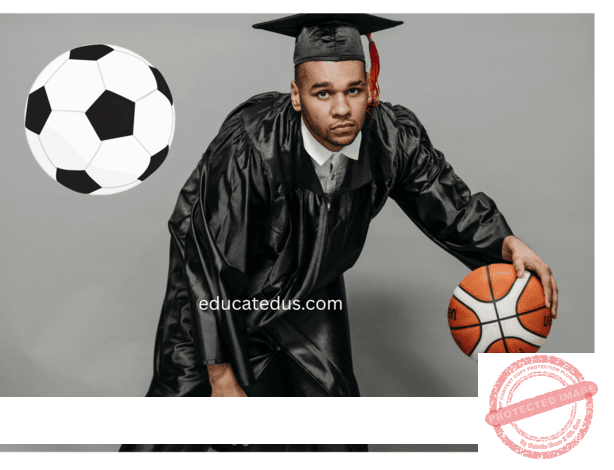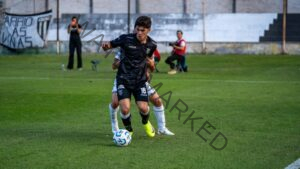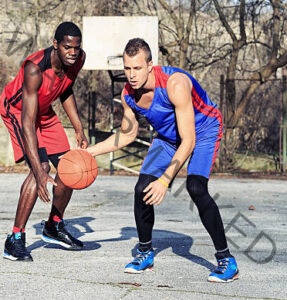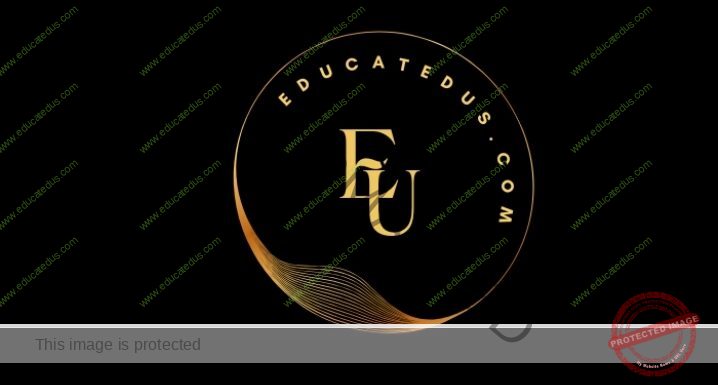Athletic Scholarships for African Soccer Players in American Colleges: The Complete Guide
Athletic Scholarships for African Soccer Players in American Colleges 2025/2026

Athletic Scholarships for African Soccer Players in American Colleges: The Complete Guide – Discover how talented African footballers can secure NCAA, NAIA, and NJCAA scholarships, navigate eligibility requirements, create standout recruitment materials, and successfully transition to American college soccer.
Athletic Scholarships for African Soccer Players in American Colleges: The Complete Guide
Introduction
For talented young soccer players across Africa, the American collegiate system represents a unique opportunity to combine athletic development with quality higher education. The United States offers one of the few systems worldwide where athletes can pursue academic degrees while competing at a high level through athletic scholarships. However, the pathway from African football academies and local clubs to American college soccer programs is filled with complexity, challenges, and nuanced requirements that many players and their families struggle to navigate.

This comprehensive guide explores the entire process of securing athletic scholarships for African soccer players in American colleges, from understanding the U.S. collegiate sports structure to preparing effective application materials and successfully transitioning to life as a student-athlete in America.
Read Also: Champions League Predictions: AI Forecasts for the Next 10 Years
American College Soccer Landscape: The NCAA, NAIA, and NJCAA Divisions
The United States has multiple collegiate athletic associations that offer soccer programs and scholarships:
NCAA (National Collegiate Athletic Association): The premier and most well-known governing body for college athletics in America, divided into three divisions:
- Division I: Offers the highest level of competition and typically the most generous scholarship packages. These schools often have large athletic budgets and extensive facilities. Top programs include Indiana University, Clemson University, and Stanford University.
- Division II: Provides a strong balance between athletic competition and academics, with partial scholarships available. Notable Division II soccer programs include University of Charleston and Lynn University.
- Division III: Focuses more on academics and participation than athletic scholarships. While these schools cannot offer athletic scholarships, many provide academic scholarships and financial aid packages for international students.
NAIA (National Association of Intercollegiate Athletics): Offers competitive soccer programs at smaller colleges and universities with more flexible eligibility requirements than the NCAA. Schools like Baker University and Missouri Valley College have strong soccer programs with scholarship opportunities.
NJCAA (National Junior College Athletic Association): Two-year community colleges that can serve as stepping stones to four-year institutions. These programs often offer scholarships and can be easier entry points for international students who may need to develop academically or athletically.
Men’s vs. Women’s Soccer Scholarship Opportunities
Gender plays a significant role in scholarship availability:
- Men’s Soccer: NCAA Division I men’s soccer is an equivalency sport with a maximum of 9.9 scholarships per team, typically divided among 25-30 players, creating competitive recruitment.
- Women’s Soccer: NCAA Division I women’s teams have 14 full scholarships available, providing more opportunities for full-ride scholarships compared to men’s programs.
For African players, understanding these distinctions is crucial when setting expectations and developing application strategies.
Eligibility Requirements for African Student-Athletes
Academic Requirements
African soccer players must meet specific academic standards to qualify for NCAA, NAIA, or NJCAA athletics:
NCAA Academic Requirements:
- Completion of 16 core courses (including English, math, science, and social studies)
- Minimum GPA of 2.3 in core courses for Division I (on a 4.0 scale)
- Standardized test scores (SAT or ACT) that align with the sliding scale relative to core GPA
Educational systems across Africa vary significantly, making NCAA evaluation complex. The NCAA Eligibility Center evaluates international credentials differently based on the country’s educational system. For example, West African secondary school certificates are evaluated differently from East African certificates.
NAIA Academic Requirements:
- Minimum 2.0 GPA on a 4.0 scale
- Minimum 18 on ACT or 970 on SAT (for tests taken after March 2016)
- Top 50% of graduating class
NJCAA Academic Requirements:
- High school diploma or equivalent
- No standardized testing requirements for international students
Immigration Requirements
Securing appropriate visa documentation presents another challenge:
- F-1 Student Visa: Required for all international student-athletes
- Demonstrated English proficiency (typically through TOEFL or IELTS exams)
- Proof of financial support for education expenses not covered by scholarships
- Acceptance letter from an accredited U.S. institution
NCAA Eligibility Center Registration
All prospective NCAA Division I and II student-athletes must register with the NCAA Eligibility Center, which verifies academic credentials and amateur status. This process can be particularly challenging for African students due to documentation differences and communication barriers.
Finding the Right College Soccer Program
Researching Compatible Programs
African players should consider multiple factors when identifying potential schools:
- Playing style compatibility: Different college teams employ different tactical approaches
- Climate considerations: Adjusting from African climates to certain U.S. regions can impact performance
- Academic program strength: Prioritizing institutions with strong programs in desired fields of study
- Cultural support systems: Schools with existing African student populations may offer easier transitions
Showcasing Your Talent
Several pathways exist for gaining visibility with American college coaches:
Digital Recruitment Materials:
- Professional-quality highlight videos (3-5 minutes showcasing technical skills, game awareness, and athleticism)
- Player profiles with accurate statistics, physical measurements, and academic credentials
- Game footage demonstrating consistent performance (not just highlights)
International Showcases and ID Camps:
- Events like the Ghana Scholarship Showcase and African Soccer Development (ASD) connect players with American coaches
- U.S. colleges increasingly organize international identification camps across Africa
Recruitment Agencies and Services:
- Organizations like PASS4Soccer and CSUSA specialize in connecting international players with American colleges
- While these services charge fees, they often have established relationships with collegiate programs
Recruitment Timeline
The recruitment process typically follows this schedule:
- 2-3 years before enrollment: Begin research and initial contact with programs
- 18-24 months before: Register with eligibility centers and create recruitment materials
- 12-18 months before: Intensify communication with coaches and begin scholarship discussions
- 9-12 months before: Take standardized tests and secure official transcripts
- 6-9 months before: Apply to universities and complete visa application processes
Scholarship Types and Financial Considerations
Full vs. Partial Scholarships
Most African soccer players will receive partial rather than full scholarships:
- Full scholarships (full ride): Cover tuition, room, board, books, and sometimes additional fees
- Partial scholarships: Cover a percentage of expenses, requiring additional funding sources
At Division I men’s programs, the 9.9 scholarships are typically divided among the roster, with many players receiving 25-75% scholarships. Women’s programs, with 14 scholarships, offer better odds for full-ride opportunities.
Additional Funding Sources
African student-athletes often need to combine multiple financial resources:
- Academic scholarships: Available based on strong academic performance
- Need-based financial aid: Determined by family financial circumstances
- International student grants: Offered by some institutions specifically for international diversity
- External scholarships: Organizations like The MasterCard Foundation provide scholarships for African students
What is the True Cost?
Beyond tuition and standard expenses, African players should consider:
- Travel costs: Flights between Africa and the U.S. can be expensive, especially during holidays
- Health insurance: Required for all international students and can be costly
- Daily living expenses: Varying significantly depending on location
- Optional Practical Training fees: For post-graduation work opportunities
Application and Recruitment Process
Effective Communication with Coaches
When reaching out to American coaches, African players should:
- Personalize emails to specific programs rather than sending generic messages
- Clearly articulate playing experience, including club names, leagues, and achievements
- Provide easily accessible links to highlight videos and full-game footage
- Follow up professionally without being overly persistent
- Be transparent about academic qualifications and visa status
Creating an Outstanding Highlight Video
The highlight video often serves as the first impression for coaches and should:
- Begin with basic biographical information and contact details
- Open with best plays to capture immediate interest
- Include game footage showing decision-making and positioning
- Demonstrate technical skills, physical attributes, and tactical awareness
- Close with additional impressive moments and contact information
- Keep length between 3-5 minutes with clear player identification
Navigating the Official Visit Process
If selected for an official visit to campus:
- Prepare for skill assessments and scrimmages with current team members
- Research the program thoroughly to ask informed questions
- Bring all relevant documentation including transcripts and test scores
- Be ready to discuss specific contributions you can make to the program
Success Stories: African Players in American College Soccer
Notable Alumni
Many African players have successfully navigated this path:
- Atuahene Francis: From Ghana to the University of Michigan before being drafted by FC Dallas in Major League Soccer
- Edward Opoku: Transitioned from Ghana’s Right to Dream Academy to the University of Virginia before playing professionally
- Nazeem Bartman: South African forward who starred at the University of South Florida
- Ema Twumasi: Ghanaian midfielder who played at Wake Forest University before being drafted to MLS

Common Pathways
Successful African student-athletes have typically followed one of several paths:
- Direct recruitment from African academies to NCAA Division I programs
- Starting at junior colleges to develop academically before transferring to four-year institutions
- Utilizing prep schools or high schools in the U.S. as stepping stones to collegiate programs
- Connecting through organized showcase events specifically designed for international recruitment
Challenges and How to Overcome Them
Cultural Adjustment
African student-athletes face significant cultural transitions:
- Language barriers: Even English-speaking African students may struggle with American dialects and slang
- Cultural norms: Adjusting to American social expectations and team dynamics
- Climate differences: Adapting to colder climates after growing up in tropical or subtropical regions
- Food adjustments: Accessing familiar cuisine and adapting to new dietary patterns
Solutions: Seek out international student offices, connect with African student associations, and communicate openly with coaches about adjustment challenges.
Academic Balancing Act
Maintaining academic eligibility while competing athletically presents challenges:
- Different educational approaches: American universities often emphasize critical thinking over memorization
- Time management demands: Balancing practice, travel, competition, and coursework
- English proficiency requirements: Technical and academic writing demands
Solutions: Utilize academic support services, form study groups, and communicate with professors about athletic commitments.
Common Visa Issues
Immigration challenges often include:
- Proving “non-immigrant intent”: Demonstrating plans to return to Africa after graduation
- Financial documentation: Showing sufficient funds for expenses not covered by scholarships
- Maintaining proper status: Understanding work restrictions and enrollment requirements
Solutions: Work closely with the university’s international student office and consider consulting with immigration attorneys specializing in athlete visas.
Life After College Soccer
Professional Opportunities
College soccer can lead to professional careers through various avenues:
- MLS SuperDraft: Top collegiate players can be selected by Major League Soccer teams
- USL and lower divisions: Professional opportunities in America’s lower soccer tiers
- International leagues: Using American college experience as a springboard to professional contracts abroad
- National team opportunities: Collegiate development potentially leading to national team consideration
Academic and Career Development
The true value of athletic scholarships extends beyond sports:
- Degree completion: African graduation rates from U.S. universities exceed 80% for student-athletes
- Optional Practical Training (OPT): One-year work authorization after graduation for international students
- STEM extensions: Additional two years of work authorization for science, technology, engineering, and mathematics graduates
- Networking opportunities: Developing professional connections through alumni networks
Resources for African Soccer Players
Organizations and Programs
Several organizations specifically support African student-athletes:
- African Athletes Education Program
- Right to Dream Academy
- Seeds of Africa Foundation
- The ISEP Foundation
Online Resources and Communities
Digital platforms provide valuable information and connections:
- International Student-Athlete Network
- NCAA International Student Guide
- Facebook groups for African student-athletes in America
Conclusion
The path from African soccer fields to American college campuses involves numerous challenges, but with proper preparation, understanding of the system, and utilization of available resources, talented players can access transformative educational and athletic opportunities. Athletic scholarships represent not just a chance to continue playing the beautiful game at a high level, but also to obtain world-class education that can impact generations to come.
For many African players, the combination of soccer development and academic advancement available through the American collegiate system provides unparalleled opportunities for growth both on and off the field. While the process requires significant effort, planning, and perseverance, thousands of successful African student-athletes have demonstrated that this challenging journey offers rewards well worth the investment.
Note: This guide provides general information about athletic scholarships for African soccer players in American colleges. Requirements and processes may change over time, and individual circumstances vary. It is your responsibility to always verify current information with official sources such as the NCAA, NAIA, or specific university athletic departments.
Frequently Asked Questions for Athletic Scholarships for African Soccer Players in American Colleges
What academic requirements must African soccer players meet to qualify for NCAA athletic scholarships?
African soccer players must complete 16 core courses, maintain a minimum 2.3 GPA for Division I, and achieve SAT/ACT scores that align with NCAA’s sliding scale. The NCAA Eligibility Center evaluates international credentials based on the country’s educational system.
How many scholarships are available for men’s versus women’s soccer programs in American colleges?
NCAA Division I men’s soccer teams have 9.9 scholarships typically divided among 25-30 players, while women’s programs offer 14 full scholarships, creating more opportunities for full-ride scholarships for female players.
What visa documentation do African soccer players need to compete in American college soccer?
African players need an F-1 Student Visa, demonstrated English proficiency (typically through TOEFL or IELTS), proof of financial support for uncovered expenses, and an acceptance letter from an accredited U.S. institution.
How can African soccer players create effective highlight videos for American college coaches?
Effective highlight videos should be 3-5 minutes long, begin with biographical information, showcase best plays first, include game footage demonstrating tactical awareness, and clearly identify the player throughout the footage.
What are the differences between NCAA, NAIA, and NJCAA soccer scholarships for international athletes?
NCAA offers the highest level of competition with varying academic requirements by division, NAIA has more flexible eligibility requirements ideal for some international students, and NJCAA (two-year colleges) can serve as stepping stones with less stringent academic requirements.
How far in advance should African players begin the college soccer recruitment process?
African players should begin researching and making initial contact with programs 2-3 years before intended enrollment, intensifying communication and scholarship discussions 12-18 months before, and completing applications 6-9 months in advance.
What additional funding sources can African soccer players combine with athletic scholarships?
African players often combine athletic scholarships with academic scholarships, need-based financial aid, international student grants, and external scholarships from organizations like The MasterCard Foundation.
Which organizations specifically help African soccer players connect with American college opportunities?
Organizations like African Athletes Education Program, Right to Dream Academy, Seeds of Africa Foundation, PASS4Soccer, and College Scholarships USA specialize in connecting African players with American collegiate programs.
What common challenges do African soccer players face when transitioning to American college soccer?
Common challenges include cultural adjustment, language barriers even for English speakers, climate differences, academic balancing, different educational approaches, and maintaining proper visa status throughout their studies.
What professional opportunities exist for African soccer players after American college careers?
After college, African players can pursue professional careers through the MLS SuperDraft, USL and lower divisions, international leagues, and potentially national team consideration, while also leveraging their degrees for career development.
